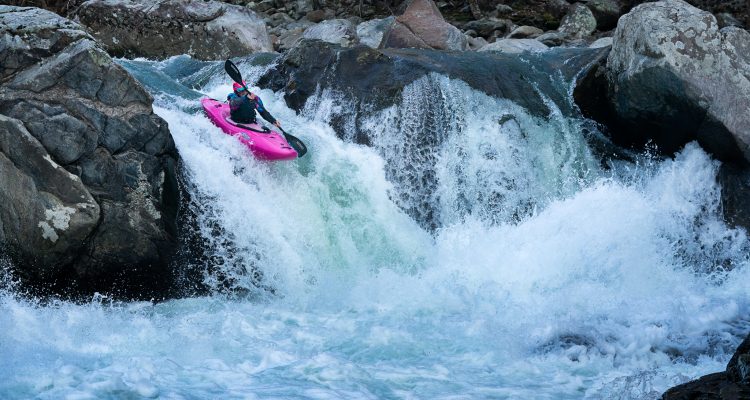More than 300 of the world’s best kayakers will travel this fall to RushSouth Whitewater Park in Columbus, Ga., to compete in the 2023 ICF Kayak Freestyle World Championship. Approximately 70% of them will use composite paddles manufactured in Monroe, Wash., by Werner Paddles. The paddles also have a local connection; Vectorply, based across the Chattahoochee River in Phoenix City, Ala., supplies composite reinforcement fabrics for them.
“The ICF event is five minutes down the road from us on the Chattahoochee River,” says Scott Phillips, Vectorply marketing manager. “It’s the first time in several years it’s been back in the United States and the first time they’ve done it on an urban course through a city.”
Vectorply is a long-time supplier for Werner, which has been manufacturing a wide variety of canoe and kayak paddles for 65 years. Its products include lightweight touring paddles for flat water conditions, freestyle paddles designed to support kayakers’ loops, spins, cartwheels and other maneuvers, and downriver racing paddles that feature a large surface area for maximum power transfer.
Werner builds the blades and the shafts of its paddles with either glass fiber or carbon fiber. CFRP paddles are more lightweight, reducing stress on the athlete’s body. GFRP paddles are heavier but have better impact resistance.
“We have years of design and engineering to understand how the materials work, where they work and which materials work best for each paddle,” says Taylor Robertson, sales and marketing manager at Werner Paddles.
The company draws upon this knowledge as it develops new designs that improve the performance and safety of its existing paddle designs and/or satisfy kayakers’ desire for new colors and styles. During this process, it works with suppliers like Vectorply to determine the composite materials best suited for each design. Before they’re introduced into the market, all of Werner’s paddle designs go through extensive testing for durability, wear and tear, strength and load capacity. (Robertson, a former competitive kayak freestyler, sometimes participates in these in-water tests.)
Vectorply primarily supplies glass fiber fabrics to Werner, although it has provided some carbon/glass fiber blends as well. “We make non-crimp fabrics (NCF), which have different plies of unidirectional glass fibers set on top of each other at different orientations and then stitched and bonded together with a polyester yarn,” says Trevor Gundberg, the company’s vice president of composite engineering.
For Werner, Vectorply usually makes a warp triaxial fabric with a stacking sequence of 0˚, +45˚ and -45˚ plies. The off-axis reinforcements stiffen and strengthen the bonds, which gives the material a higher twisting resistance and enables Werner to fine tune the paddle.
Werner uses hand layup, a compression molding system and a proprietary resin to manufacture its blades and shafts, employing a mandrel for shaft production. The blades and shafts are produced separately, then epoxied together so that Werner can offer kayakers paddles with different shaft and blade combinations. Some customers, such as REI, request special graphics for the blades, which Werner adds with a proprietary process during molding. The company achieves the smooth, shiny surface of its paddles by keeping its molds smooth and highly polished, Robertson says.
The material that Vectorply supplies is also important to this finished look. Although Vectorply has an inventory of more than 350 different material combinations, it makes a custom fabric for Werner.
The challenge for Vectorply is to make a fabric that meets Werner’s quality requirements, which are very high from an aesthetic point of view. Vectorply keeps visible gaps in its materials to a minimum by using smaller sizes of glass roving, but that increases the cost per pound of the material as well as the time it takes to set up production. “We have found a way to use the most cost-efficient roving sizes, which helps with our costs and with our pricing to Werner,” Gundberg adds.
“Our process starts with the best materials. Without these we would not be able to deliver our high-quality products to our customers,” says Robertson. “Vectorply has been a wonderful partner for many years, and they are a key component to our success.”


